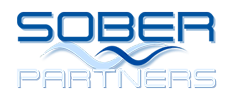Aetna Insurance
Paying For Rehab With Aetna Insurance
Aetna is one of the biggest healthcare insurance companies in the US, with almost 40 million subscribers. Along with standard health insurance policies, Aetna also provides some cost coverage for substance abuse.
Addiction affects millions of Americans, so seeking help is nothing to be ashamed of. If you have Aetna health insurance and want to get treatment for substance abuse or addiction, this article is for you. Keep reading to learn about Aetna drug rehab coverage.


Substance Abuse Treatment Options
When it comes to addiction, there is no one-size-fits-all solution. Instead, there are several different programs available to help people. Understanding each program will help you determine which one is best for you.
In a medical detox program, medical advisors help you safely withdraw from drugs and alcohol under 24/7 supervision. In addition, healthcare professionals will address your symptoms as you detox.
During inpatient or residential treatment, you live at a facility and receive care. This type of facility includes group and individual therapy.
Doctors often recommend inpatient treatment for those with dual-diagnosis mental health issues, limited outside support, toxic home environments, and a history of relapse.
With outpatient treatment, you get to meet with doctors and therapists, attend group and recovery meetings, all while residing at home. As a result, it’s less restrictive than an inpatient program.
Outpatient programs usually require you to spend 10-12 hours a week visiting a treatment center. They are suitable for people with a mild addiction but can also be part of a long-term program.
How to Pay for Drug Treatment
Figuring out how to afford drug rehab can be stressful. The cost of rehab facilities is often expensive. Fortunately, you have options. Most private health plans offer some drug rehab coverage because of a few federal laws.
The Americans with Disabilities Act (ADA) protects people with addiction from workplace discrimination. An employer cannot deny you work or fire you because of an addiction problem. The law classifies addiction as a disability.
The Family and Medical Leave Act (FMLA) protects you from being denied leave to seek treatment. Employees can take up to 12 weeks leave each year to seek treatment. However, the leave of absence is unpaid.
Additionally, you can use your employer’s insurance to enroll in a rehab center since the law stipulated you receive addiction treatment when necessary.
Most importantly, the Affordable Care Act (ACA), or Obamacare, mandates that health insurance companies cover behavioral health treatment, mental health disabilities, and substance abuse treatment.
Of course, the law doesn’t require these companies to cover the entire treatment costs. But, patients can rest assured knowing their health insurance will cover a portion of the costs.
Each health insurance company and plan will cover a different amount of the total costs of rehab. Let’s take a closer look at paying for drug rehab with Aetna.


All About Aetna
Aetna started as a life insurance company in 1853. However, it wasn’t until 1899 that the company entered the health insurance business. As a result, today, residents of all 50 states can buy Aetna health insurance.
Their network coverage includes:
- 1.2 million healthcare professionals
- Nearly 700,000 primary care doctors and specialists
- Over 5,700 hospitals
Aetna, a CVS Health company, offers medical, pharmacy, and dental plans. They also offer Medicare plans, Medicaid services, and behavioral health programs.
Aetna strives to control rising healthcare costs while improving the quality of care. They provide information for customers to make well-informed decisions about their healthcare and financial well-being.
Aetna Drug Rehab Coverage
With so many different health insurance plans, Aetna drug rehab coverage will differ from person to person. In addition, the state you live in and if the facility you choose is in-network will change the price.
However, Aetna is in-network for many substance abuse and addiction treatment centers.
Furthermore, Aetna’s drug rehab coverage will vary based on the intensity and frequency of the program you choose. The programs listed above all accept partial coverage from Aetna health insurance holders.
But, programs with higher intensity and frequency are more expensive.
Before choosing an addiction treatment facility, you should check your Aetna policy benefits. This will help you determine which costs your insurance covers and which costs will be out-of-pocket.
To find this information, call the number on your Aetna insurance card. Or, you can log into your Aetna account on their website. This way, you can find out exactly which costs they cover for each different program.
You can see which treatment facilities are in-network to get a better price. No matter which program you choose, drug rehab from Aetna is there for you.

Get Help Today
As struggling with addiction is a severe health concern, you shouldn’t feel embarrassed about asking for help. For eligible policyholders, Aetna drug rehab coverage is available for you when you need it.
Get help now at Sober Partners. The staff of our Orange County Rehab Centers are dedicated to your treatment and future success. If you’re looking for treatment outside of California, search “drug rehab near me” to find assistance.
